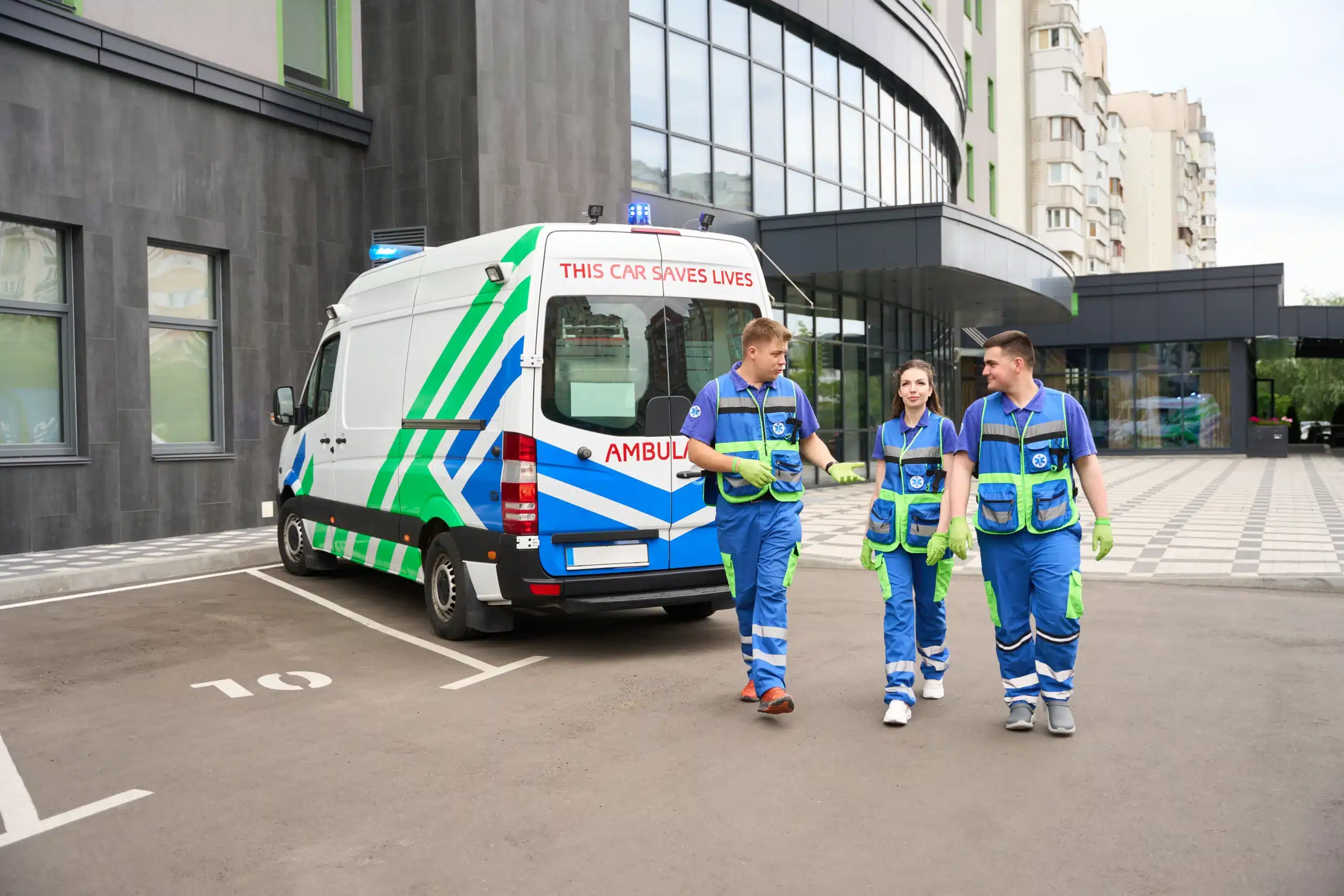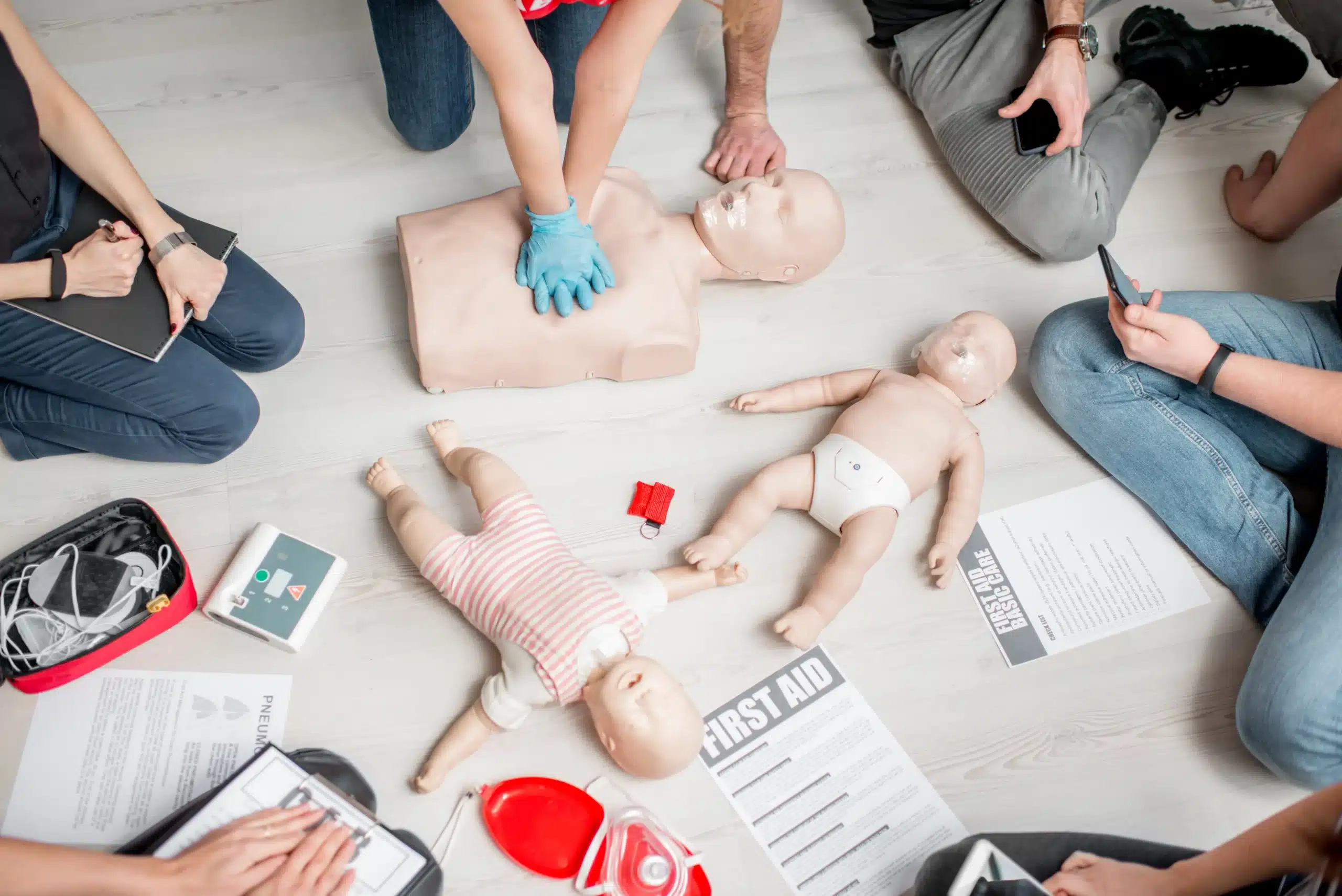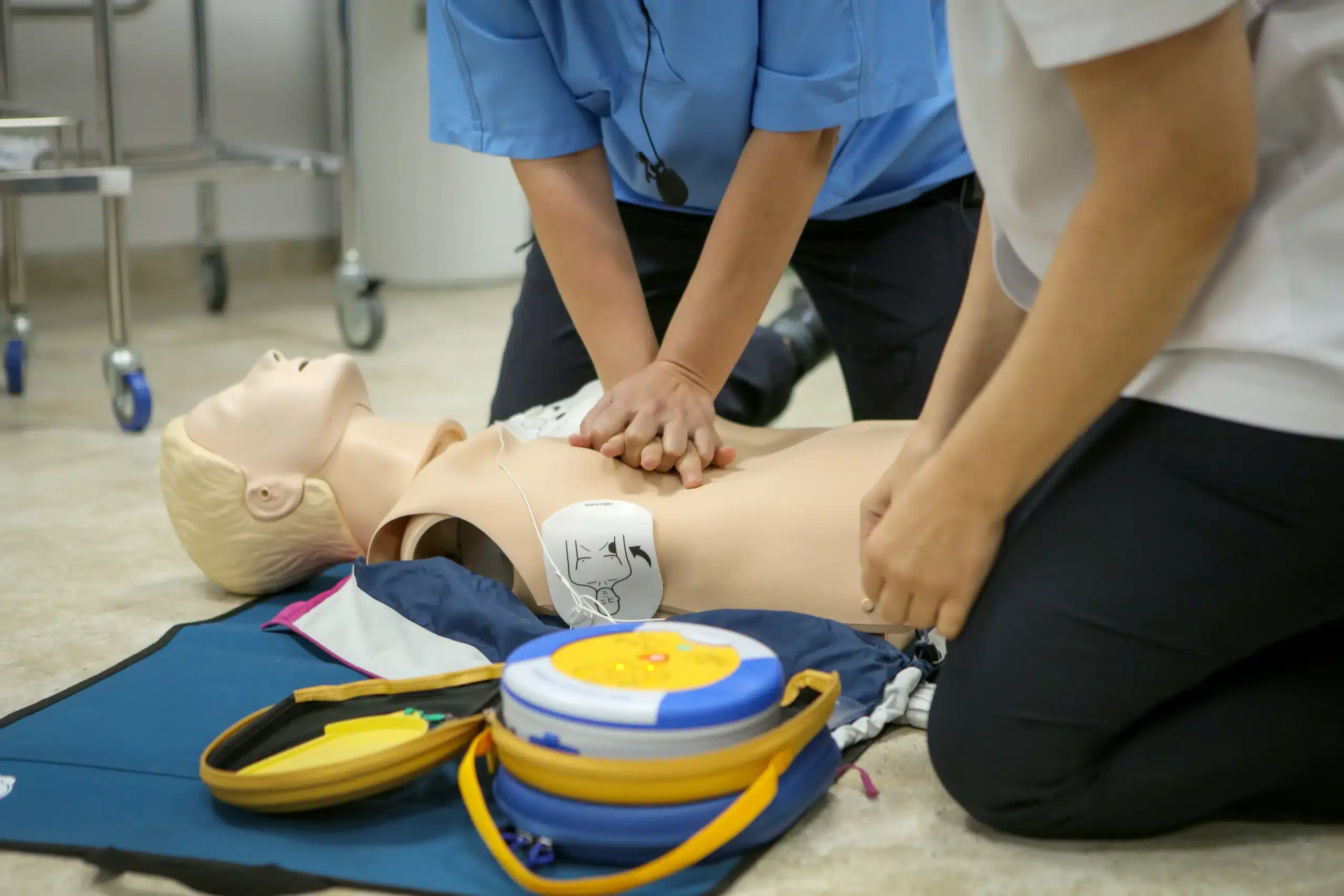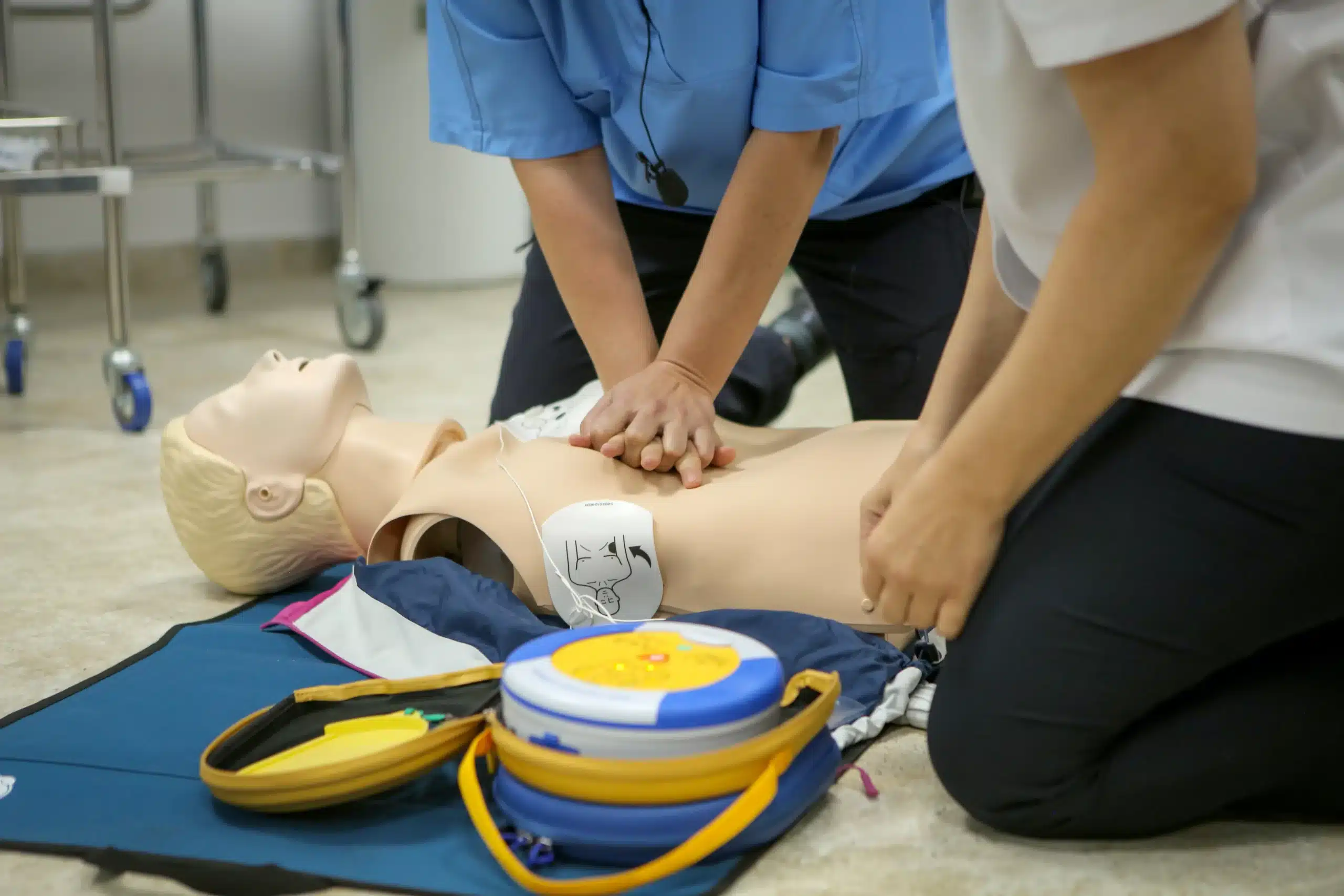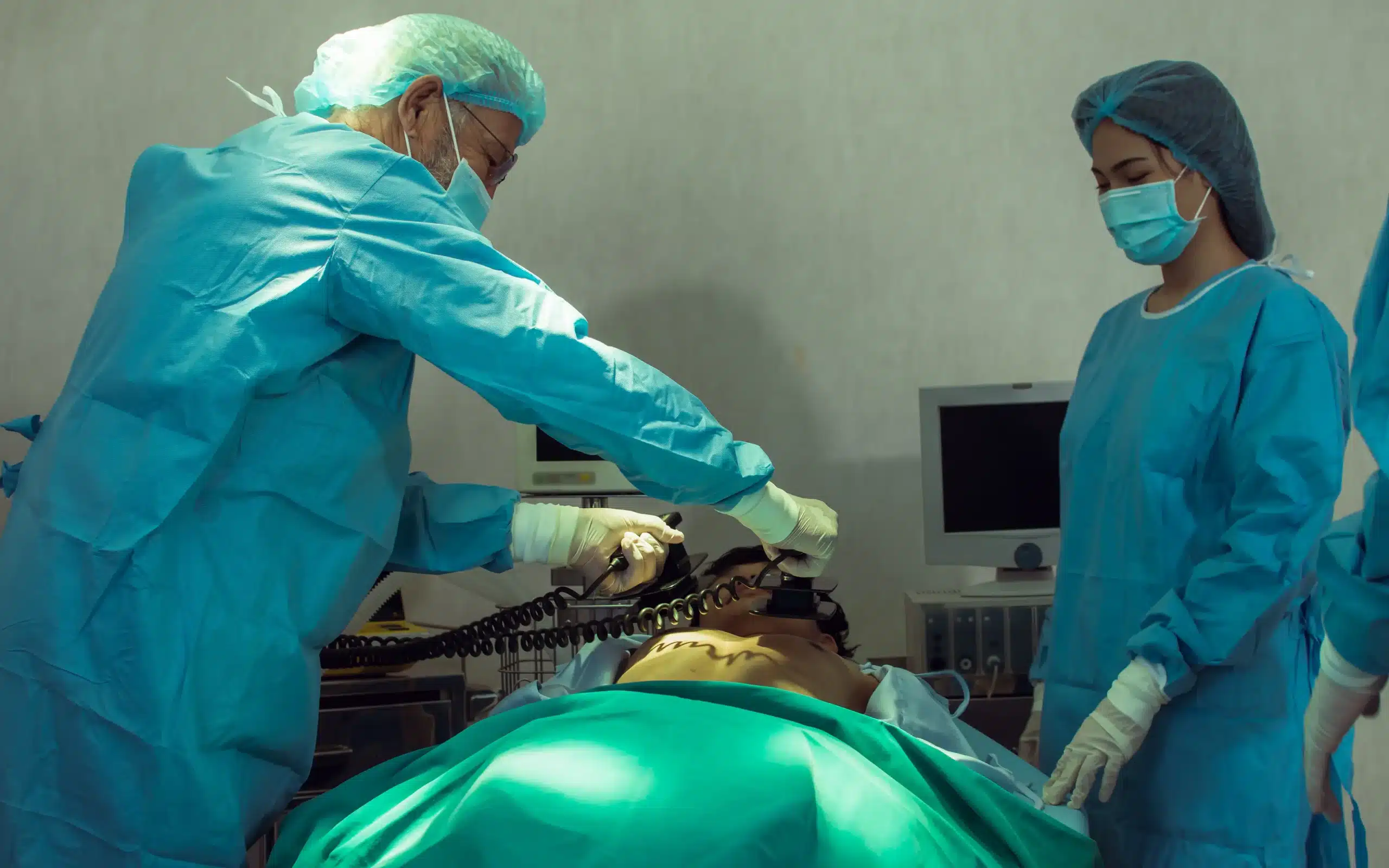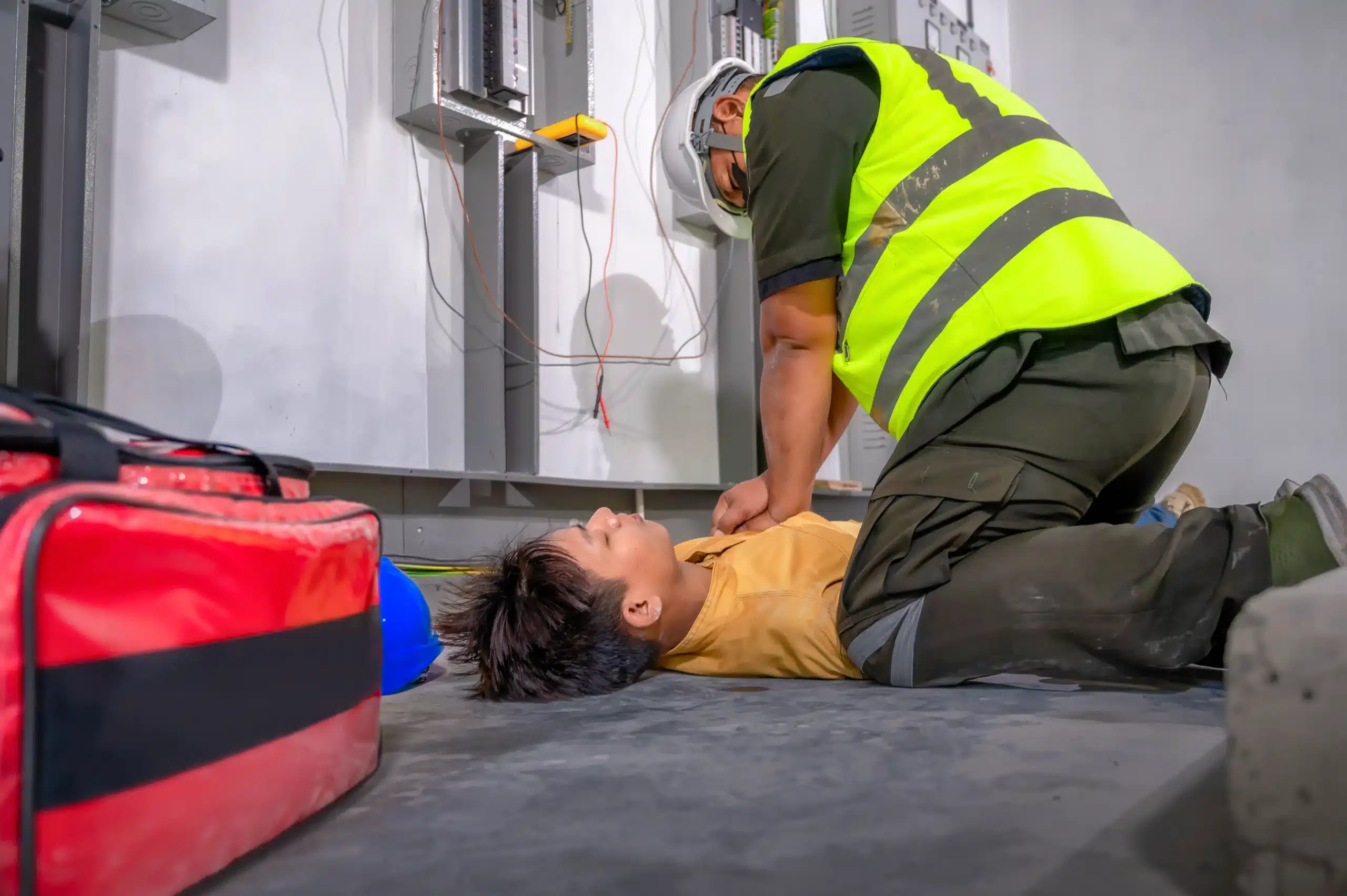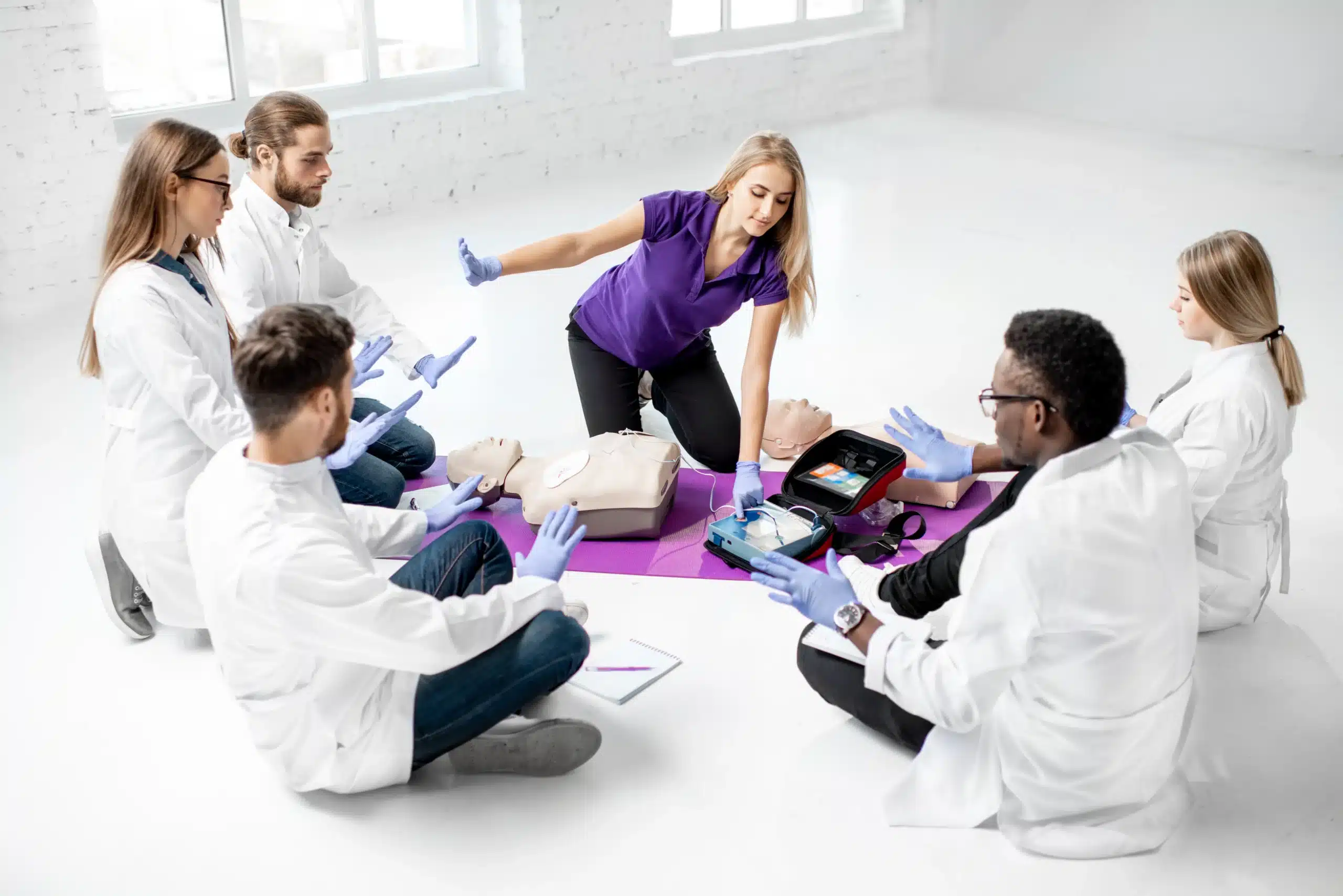In the healthcare field, being prepared for emergencies is paramount. BLS certification equips you with the skills to respond effectively in critical situations, providing immediate care that can make all the difference. But what if your schedule is already packed, or you prefer a more flexible learning approach? BLS HeartCode in Capitola offers the perfect solution. This blended learning program combines online coursework with in-person skills practice, allowing you to learn at your own pace and master essential life-saving techniques. This article will explore the ins and outs of BLS HeartCode, from course structure and costs to finding the right training provider in Capitola. We’ll also compare HeartCode BLS with traditional BLS training to help you choose the best fit for your needs.
Key Takeaways
- HeartCode BLS blends online learning with hands-on practice: This flexible approach lets you learn at your own pace and then demonstrate your skills in person.
- Consider your learning style when choosing a BLS course: If you prefer self-directed learning, HeartCode BLS offers flexibility. If you thrive in a classroom setting, traditional BLS might be a better fit.
- BLS certification is a valuable investment: It equips you with life-saving skills, enhances career prospects in healthcare, and empowers you to confidently respond to emergencies.
What is BLS HeartCode?
BLS HeartCode is a blended learning program from the American Heart Association (AHA) combining online coursework with in-person skills practice. It’s designed to equip healthcare providers and other qualified individuals with the knowledge and skills to perform Basic Life Support (BLS). This flexible approach lets you learn at your own pace online before demonstrating your skills in a hands-on session. Learn more about our BLS certification courses.
Key Course Components
The HeartCode BLS course consists of two main parts: online learning and a hands-on skills session. The online portion uses interactive elements like videos, simulations, and quizzes to teach essential BLS knowledge and techniques. This allows you to work through the material at your own speed and revisit concepts as needed. The online portion covers recognizing life-threatening emergencies, performing high-quality CPR, delivering proper ventilations, and using an AED. More details on the online portion are available.
Skills You’ll Gain
Through the BLS HeartCode program, you’ll develop crucial skills to respond effectively in emergencies. You’ll learn how to perform chest compressions at the correct depth and rate, ensuring proper hand placement and body mechanics to minimize fatigue. The course also covers delivering appropriate ventilations and the early use of an AED. These skills empower you to provide immediate care and potentially save lives. We also offer a low price guarantee for BLS training.
Understanding the BLS HeartCode Course Structure
This section breaks down how the BLS HeartCode course blends online learning with in-person skills practice. It’s a flexible and convenient way to earn your American Heart Association BLS certification.
Online Learning
The HeartCode BLS course begins with an online learning module. This self-paced portion lets you learn essential BLS skills from anywhere with an internet connection. You’ll work through interactive lessons, simulations, and assessments covering core concepts like CPR, AED use, and how to relieve choking. This online portion allows you to absorb the material at your own speed and repeat sections as needed, building a solid foundation before you move on to hands-on practice. You can find more information about online CPR training from resources like PALS St. Louis.
Hands-on Skills Practice
After completing the online portion, you’ll attend an in-person skills session. This session focuses on practicing the techniques you learned online with a certified AHA instructor. You’ll work with training manikins and other equipment to simulate real-life scenarios. This hands-on practice is essential for building muscle memory and confidence in your abilities. Resources like Code Blue Training offer further information on the importance of these skills sessions.
Adaptive Learning Technology
The online portion of HeartCode BLS uses adaptive learning technology. This means the program adjusts to your individual learning style and pace. If you’re struggling with a particular concept, the program provides additional practice and support. If you’re mastering the material quickly, it will advance you to more challenging topics. This personalized approach helps you learn more efficiently and retain information better. CPR First Aid eLearning offers more details on how this technology enhances the HeartCode BLS program.
Find Top BLS HeartCode Providers in Capitola
If you’re looking for a reliable BLS HeartCode provider in Capitola, you have several great options. Choosing a provider that’s convenient, offers high-quality instruction, and fits your schedule is important. Here are a few places to start:
Safety Training Seminars
Located in nearby Santa Cruz, Safety Training Seminars is a woman-owned American Heart Association Training Center known for its excellent instruction. They offer various AHA-certified courses, including BLS, ACLS, PALS, CPR, and First Aid. Their focus on customer service and convenient location makes them a popular choice for those seeking certification in the Santa Cruz, Monterey, and Capitola areas. Learn more about their BLS course on their website.
Santa Cruz CPR Classes
Santa Cruz CPR Classes offers a variety of courses designed for different professional needs. They understand the importance of BLS certification, especially for healthcare providers in Capitola. Their website offers resources and information on why BLS is so important and how it prepares you for emergencies. Explore their course offerings and learn more about their commitment to high-quality training. They also have a low price guarantee.
American Heart Association
The American Heart Association website is a valuable resource for finding certified training centers in your area. You can search for local providers offering BLS, ACLS, PALS, and other courses. AHA certification is widely recognized and ensures your training meets the highest standards. Safety Training Seminars offers a wide range of AHA-certified courses, making them a convenient option for AHA certification in the Capitola area.
Local Hospitals and Medical Centers
Many local hospitals and medical centers offer BLS training and certification courses to their staff and the public. These institutions often align their courses with the latest guidelines and practices in emergency care. Contact hospitals and medical centers in Capitola directly to find convenient and reputable BLS HeartCode training. You can also contact us for more information.
Explore BLS HeartCode Costs and Value
When considering BLS HeartCode certification, it’s helpful to understand the associated costs and the long-term value it brings. Knowing the typical price range, exploring potential discounts, and recognizing the benefits beyond the initial certification can help you make a smart decision.
Average Price Range
BLS certification typically costs somewhere between $70 and $100. This price can vary a bit depending on your location and the training provider. For example, our BLS certification courses are competitively priced within this range. It’s wise to factor this cost into your training budget.
Group Discounts and Special Offers
If you’re organizing training for a group, look for providers that offer group discounts. At Safety Training Seminars, we understand the needs of organizations and offer flexible scheduling and group discounts to make training more accessible. Also, check if a provider has a low-price guarantee, like our Low Price Guarantee, to ensure you’re getting the best deal.
Long-Term Certification Benefits
Your BLS certification is valid for two years, after which you’ll need to renew. This ongoing training is important not only to keep your skills current, but also to enhance your career opportunities and, ultimately, improve patient care. Think of BLS certification as an investment in yourself, your career, and your community. Having more trained individuals significantly improves emergency response. Plus, staying current with the latest guidelines ensures you’re always prepared to deliver the best possible care.
BLS Certification: Validity and Renewal
Certification Duration
Your BLS certification, whether earned through a traditional classroom course or the blended learning HeartCode BLS option, is typically valid for two years. Keep track of your expiration date—it’s essential for maintaining your credentials and ensuring you’re always ready to provide effective care. A simple calendar reminder can help you stay on top of renewals.
Renewal Steps
Renewing your BLS certification is a simple process. The American Heart Association offers several renewal options, including renewal courses and the HeartCode BLS blended learning format. With HeartCode BLS, you complete the online portion, including modules and an exam, then demonstrate your skills in a hands-on session with a certified BLS instructor. This blended learning approach offers flexibility and ensures you have the practical skills to respond confidently in real-world scenarios. Safety Training Seminars offers various renewal courses and flexible scheduling.
Continuing Education Requirements
While BLS certification is valid for two years, continuing education in healthcare is always beneficial. Staying current with the latest advancements and best practices can help you advance your career and, more importantly, improve patient outcomes. Consider workshops, conferences, and additional certifications to expand your skillset. Reach out to Safety Training Seminars to discuss how continued training can support your professional growth.
Prepare for Your BLS HeartCode Course
So, you’re signed up for your BLS HeartCode course—great! Now, let’s make sure you’re prepared to make the most of it. HeartCode BLS is a blended learning course, combining online learning with in-person skills practice and testing. This approach lets you learn the material at your own pace online and then demonstrate your skills to a certified instructor.
What to Bring
For the in-person skills check, bring your BLS HeartCode completion certificate to show your instructor you’ve finished the online portion. Dress comfortably, since you’ll be practicing your skills. Don’t forget a government-issued photo ID, like a driver’s license or passport.
Maximize Your Learning
The key to maximizing your BLS HeartCode training is understanding the course structure. The HeartCode BLS course uses a blended learning format, combining online coursework with a hands-on skills session. This allows you to learn online at your own speed and then demonstrate your skills in person. The online portion includes various learning resources like videos, simulations, and interactive exercises to teach you core BLS knowledge and techniques. Take your time with the online materials—don’t rush. Make sure you understand the concepts before moving on. Jot down any questions for your instructor during the in-person skills check. By fully engaging with the course content and preparing thoroughly, you’ll have a successful learning experience and gain confidence in performing life-saving BLS skills.
BLS HeartCode vs. Traditional BLS: Which is Right for You?
Choosing the right BLS certification course often comes down to two main options: HeartCode BLS and traditional BLS. Both paths lead to the same American Heart Association (AHA) BLS Provider certification, but their learning styles differ. This section breaks down the key differences to help you decide which format best fits your needs and learning preferences.
Key Differences
HeartCode BLS is a blended learning program combining online coursework with an in-person skills check. This format offers flexibility, allowing you to complete the cognitive portion at your own pace. Traditional BLS, on the other hand, involves a classroom setting with an instructor leading the entire course, including hands-on practice. Both methods cover the same core BLS content and techniques, ensuring comprehensive training regardless of format.
If you prefer a structured, in-person learning environment and value direct interaction with an instructor, traditional BLS might be a good fit. This format provides real-time feedback and allows for immediate clarification of any questions. You’ll practice skills alongside your classmates, fostering a collaborative learning experience. Safety Training Seminars offers traditional BLS courses in Santa Cruz.
For those who thrive in self-paced learning or have busy schedules, HeartCode BLS offers greater flexibility. You can complete the online modules anytime, fitting the training around your existing commitments. This format also incorporates interactive elements like simulations and videos, creating an engaging learning experience. Once you’ve finished the online portion, you’ll schedule a short, in-person skills session to demonstrate your proficiency. Check out our BLS HeartCode course for more details. Regardless of your choice—HeartCode BLS or traditional BLS—both equip you with essential skills and knowledge to respond confidently in medical emergencies. Both options fulfill the requirements for healthcare professionals and other individuals seeking BLS certification.
Why BLS Training Matters for Healthcare Professionals
As a healthcare professional, your commitment to patient care goes beyond daily checkups and treatments. It’s about being equipped to handle emergencies and provide immediate, life-saving care when every second counts. That’s precisely why BLS training is so vital in the healthcare field. It empowers you with the skills and confidence to make a real difference in critical situations.
Career Advancement
BLS certification is often a non-negotiable requirement for many healthcare jobs. Whether you’re a physician, nurse, EMT, or other healthcare professional, having a current BLS certification demonstrates your commitment to providing high-quality patient care. It’s a valuable asset that can significantly improve your job prospects and open doors to new opportunities. In a competitive job market, BLS certification sets you apart and shows potential employers you’re ready to handle critical situations.
Improve Patient Outcomes
Beyond career advancement, BLS training directly translates to better patient outcomes. Equipping yourself with the skills to perform CPR, use an AED, and manage airway obstructions can significantly increase a patient’s chances of survival during a cardiac arrest or other medical emergency. BLS training provides the knowledge and skills to follow established algorithms effectively, ensuring the best possible outcome for your patients. It also emphasizes the importance of teamwork and communication during emergencies, crucial for coordinating effective responses and minimizing errors.
Schedule Your BLS HeartCode Course in Capitola
Flexible Options
The HeartCode BLS course offers a blended learning experience, combining online coursework with in-person skills practice. This format provides flexibility for busy professionals and those with demanding schedules. You can complete the online portion at your own pace, then schedule a hands-on skills session with a certified instructor. This combination of online learning and hands-on training allows you to learn essential life-saving techniques in a way that fits your lifestyle. The online portion uses adaptive learning technology, personalizing your learning path based on your performance. This ensures you grasp the material thoroughly before moving on to the practical skills session.
Registration
Ready to get certified? Several options are available for registering for a BLS HeartCode course in Capitola. Safety Training Seminars offers convenient courses in the area. You can also find more information on our BLS page. Check with Santa Cruz CPR Classes for upcoming course dates and registration information. The American Heart Association website provides a course search tool to locate certified training centers near you. Additionally, local hospitals and medical centers often offer BLS HeartCode courses.
Address Common Concerns
One common misconception about BLS training is that it’s only for healthcare professionals. This isn’t true. BLS certification is valuable for anyone who wants to be prepared for a medical emergency. Whether you’re a teacher, coach, parent, or simply someone who wants to learn life-saving skills, BLS training can empower you to act confidently in critical situations. Another concern is the effectiveness of online learning. Rest assured, the HeartCode BLS program is designed to be comprehensive and engaging. The blended learning approach builds confidence by combining online learning with a practical skills assessment, ensuring you’re fully prepared to respond to real-world emergencies.
Related Articles
- HeartCode BLS in Monterey: Your Certification Guide – Santa Cruz CPR Classes
- BLS HeartCode Santa Cruz: Flexible CPR Certification – Santa Cruz CPR Classes
- BLS Certification in Santa Cruz: Your Complete Guide – Santa Cruz CPR Classes
- CPR Certification in Santa Cruz: A Complete Guide
- Basic Life Support (BLS) in Capitola: Find a Class Near You – Santa Cruz CPR Classes
Frequently Asked Questions
What exactly does “blended learning” mean in the context of BLS HeartCode? Blended learning combines online self-paced learning with a shorter, in-person session for hands-on practice and skills testing. You learn the material online through interactive modules, and then demonstrate your competency in person with a certified instructor. This approach offers flexibility and allows you to tailor your learning experience to your schedule.
If I take a BLS HeartCode course, is the certification the same as one from a traditional BLS course? Yes, absolutely. Whether you choose the HeartCode blended learning format or a traditional classroom course, the BLS Provider certification you receive is the same and comes from the American Heart Association (AHA). Both formats cover the same curriculum and meet the same standards.
How long is my BLS certification valid, and what’s involved in renewing it? BLS certification is valid for two years. To renew, you can take another BLS course, either the traditional classroom format or the HeartCode blended learning option. Renewal courses cover updated guidelines and refresh your skills, ensuring you’re always prepared to provide effective care.
How much does BLS HeartCode training typically cost, and are there any ways to save on the cost? BLS HeartCode training typically costs between $70 and $100, though prices can vary slightly based on location and the training center. Look for training providers that offer group discounts if you’re coordinating training for multiple people. Some providers also offer a low-price guarantee, so it’s always a good idea to compare prices.
Why is BLS training important for people outside of the healthcare profession? BLS training isn’t just for healthcare professionals; it’s a valuable life skill for anyone. Knowing how to perform CPR, use an AED, and relieve choking can save lives in emergencies that can happen anywhere, from homes and workplaces to public spaces. Having more people in a community trained in BLS can significantly improve outcomes in these situations.
